150 years after people started jamming motors in safety bicycles, we’re still trying to perfectly merge the two in hopes of going faster and farther. Yamaha developed their first prototype ebike in 1989, followed by their first production model in 1993. By 2016, Yamaha sold two million electric bicycles!
Today, ebikes are having a moment as millions of people experience drastic changes to their personal transportation. Working from home is suddenly common. Commutes may be reduced, shortened, or eliminated entirely. Public transportation is to be avoided wherever possible, and demand for recreational riding is exploding.
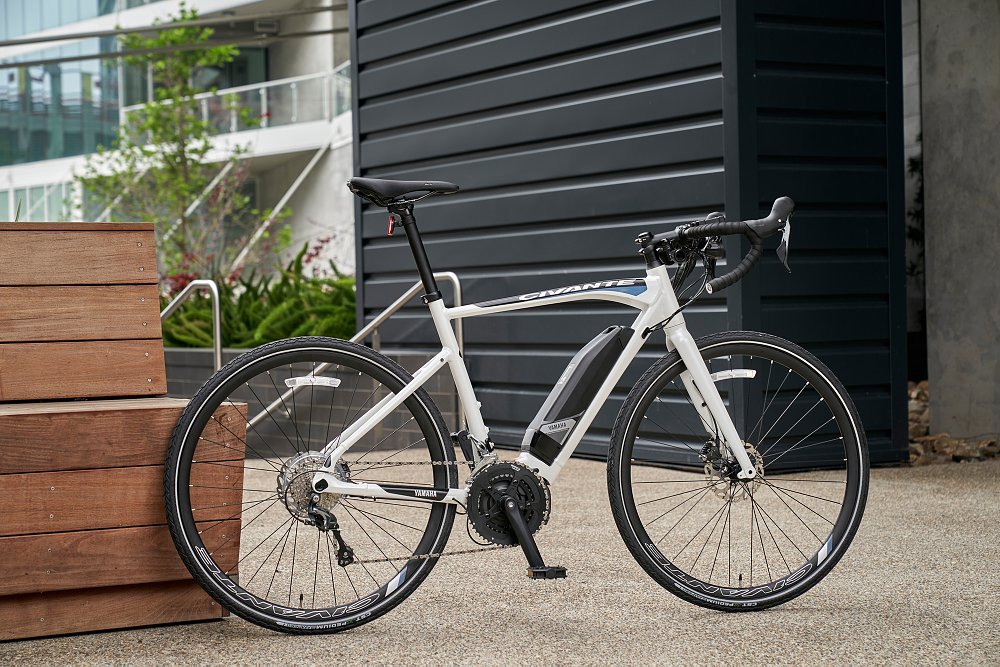
Yamaha’s new electric bicycle, the Civante, is the latest addition to their power assist range. For those familiar with Yamaha’s existing lineup, the Civante’s drop bars and everyday focus make it most similar to their Urban Rush.
They expect the average Civante rider to use the bike for a “daily commute, fitness ride, or weekend adventure.” This genre of bicycle has skyrocketed in popularity over the last few years as riders gravitate towards practical, versatile models.
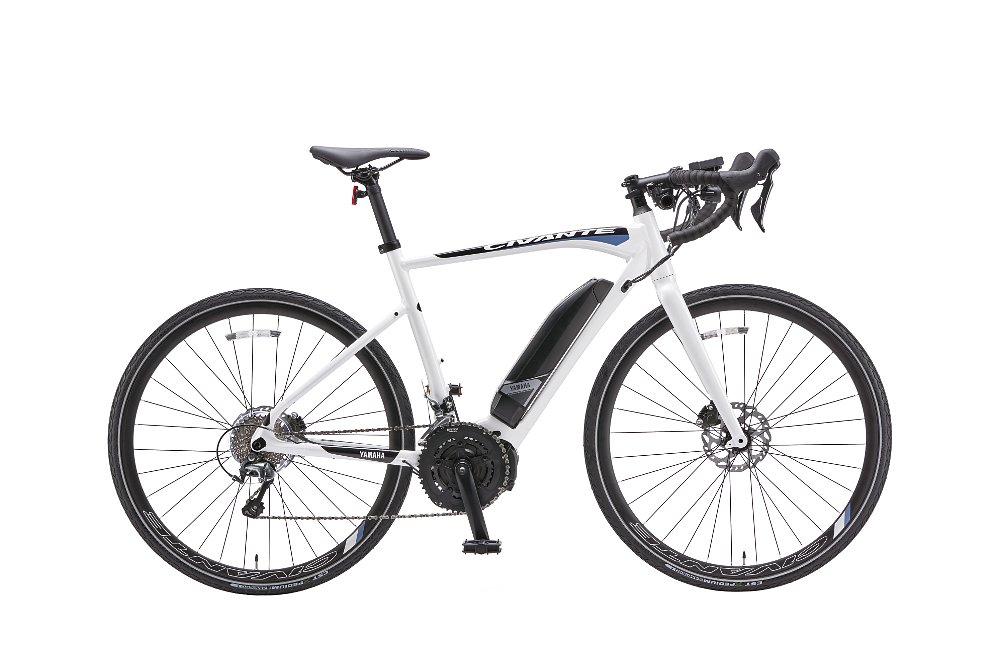
The Civante is a Class 3 ebike, which means that the motor only assists while the rider is pedaling (no throttle), and it will assist the rider up to 28 miles per hour. Class 3 is popular with city riders and commuters, so it’s no surprise to see Yamaha go after this segment. Some bike paths and trails may be off-limits, so check your local ebike rules before learning them the hard way.
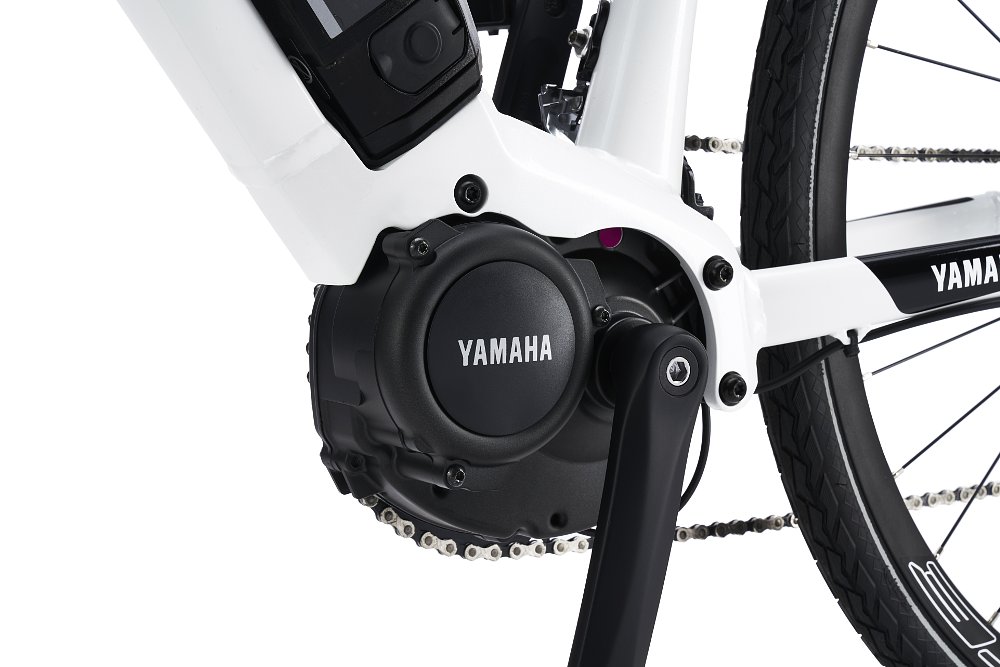
The motor at the heart of the Civante is Yamaha’s 500W PWSeries SE motor, mounted amidships in a hydroformed aluminum frame. Team Blue’s proprietary Triple Sensor System “measures pedal-torque, bicycle speed and crank arm cadence” so that the controller can deliver power assist as smoothly as possible. Yamaha claims the sensor system is frictionless. The cadence sensor supports up to 110 rpm, which is the upper limit of road riding, and getting into competitive time trials territory… or Spurgeon’s pace in spin class. The typical Civante rider shouldn’t have to worry about this much, especially with the assist.
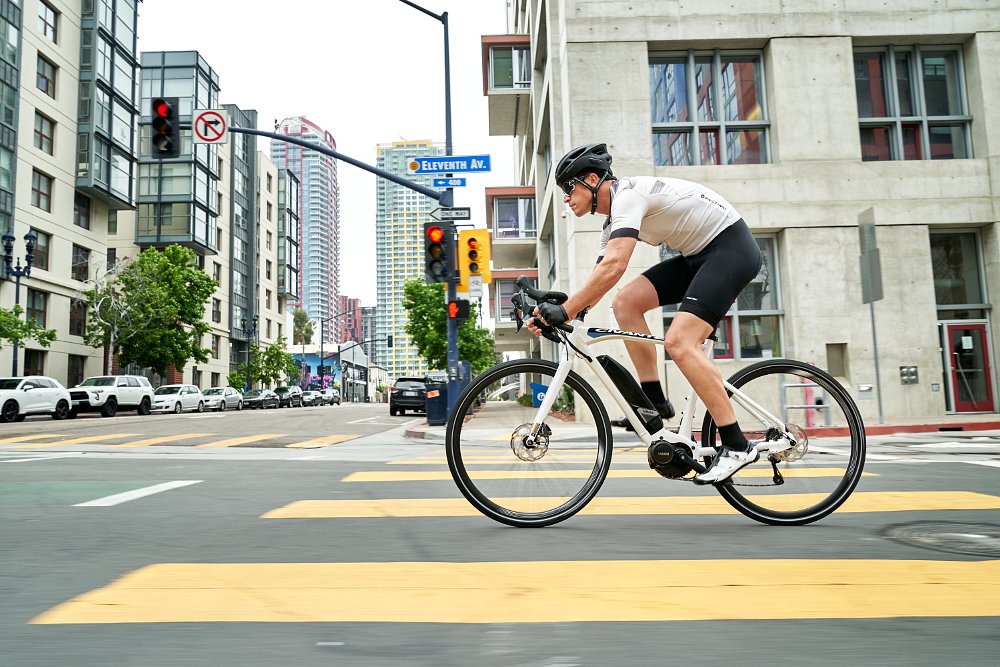
While I can’t comment on the performance of the Yamaha drivetrain, simply because I haven’t tested one yet, I do think Yamaha deserves some credit for producing their own motors and other components. Most ebike manufacturers, at least outside the industry’s largest players, rely on suppliers like Bosch and Bafang for drivetrain components, and then design their own frames to fit them. Speaking of frames, the Civante comes in three frame sizes. They should cover most of the U.S. market, as this is a U.S.-only model.
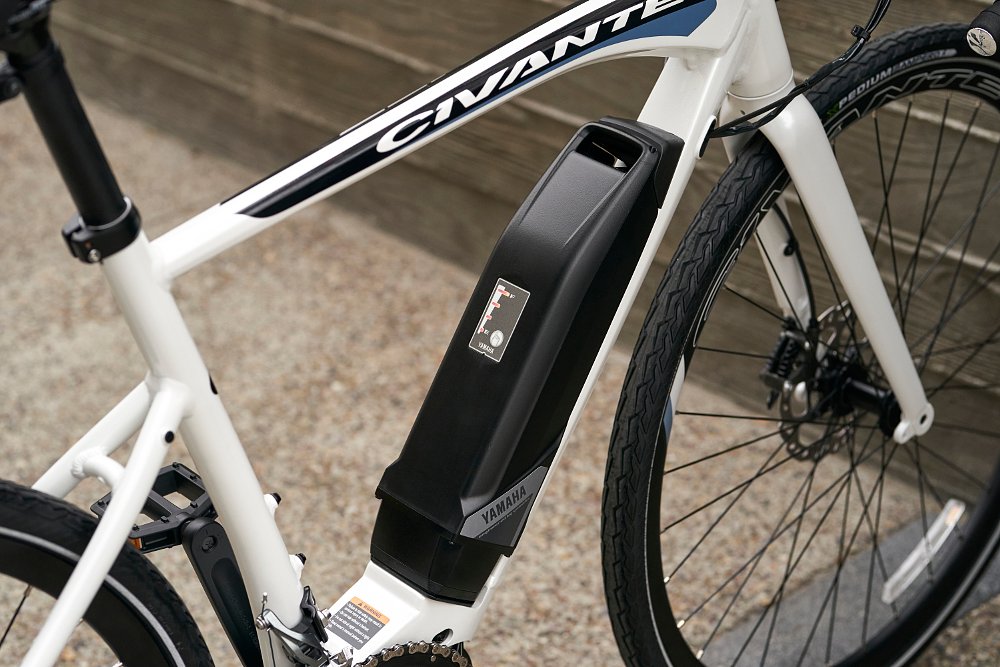
The battery is a 500Wh, and the bike can put down 70 Nm of max torque. The lockable battery can be charged on or off the bike, and the high-speed charger gets the battery to 80 percent in around an hour. Four power modes (ECO, ECO+, Standard, and High) control the assist. The whole package weighs in at 43.4 pounds, and rolls on 700x35c ebike tires with reflective sidewalls.
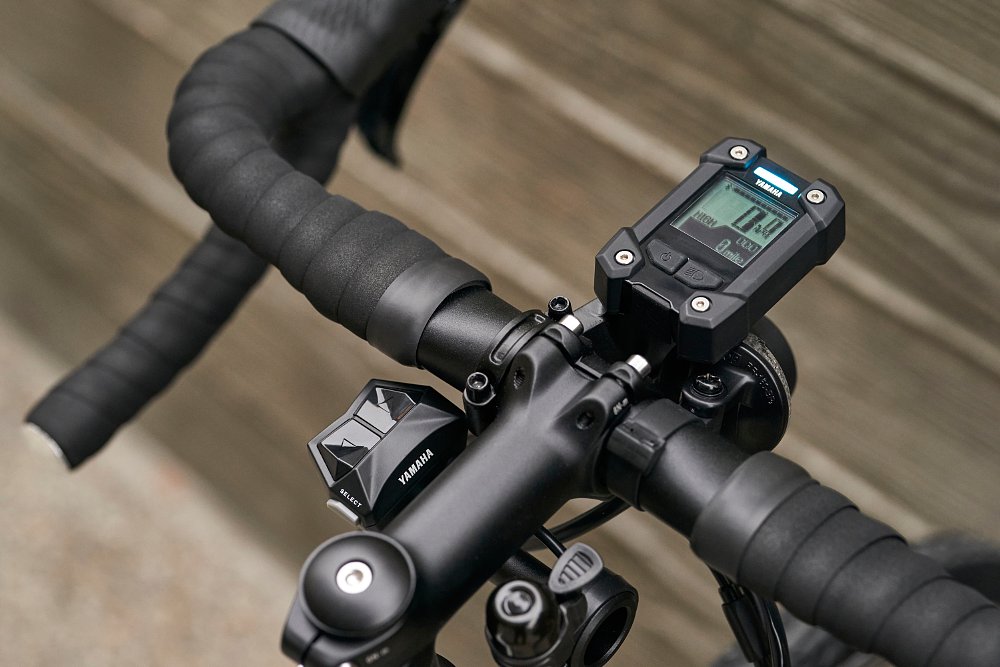
The cork-wrapped drop bar wears a bright LCD screen with Bluetooth connectivity, plus 10-speed Shimano STI shifters and hydraulic disc brakes. The Civante includes an LED headlight and wiring for an accessory rear rack with an integrated tail light. Fenders are also available, of course. Cables and wires are internally routed where possible to keep a clean appearance.
I don’t get the impression that Yamaha intends to topple Trek, Giant, Specialized, or any of bicycling's other superpowers with the Civante. That said, it looks to be a solid option for ebike riders who are willing to look beyond the traditional bike shop brands, but aren’t too excited by offerings from fly-by-night startups. Yamaha’s brand recognition, as well as their assisted bicycle background, should sway some buyers away from cheaper ebikes with less support. On the other hand, your local Yamaha dealer might not have much experience selling electric bicycles, and riders might not know to look for bicycles at a motorcycle dealership instead of the local bike store. Maybe that will change. This is Yamaha’s first Class 3 bike for the United States, and they’ll probably continue to expand their lineup as ebike demand grows, both domestically and abroad.
The Civante will retail for $3,399 with a three-year warranty on the drive unit, battery, controller, display, and frame. Your local Yamaha dealer should be able to order one for you this summer if they don’t already stock them.

 Membership
Membership










